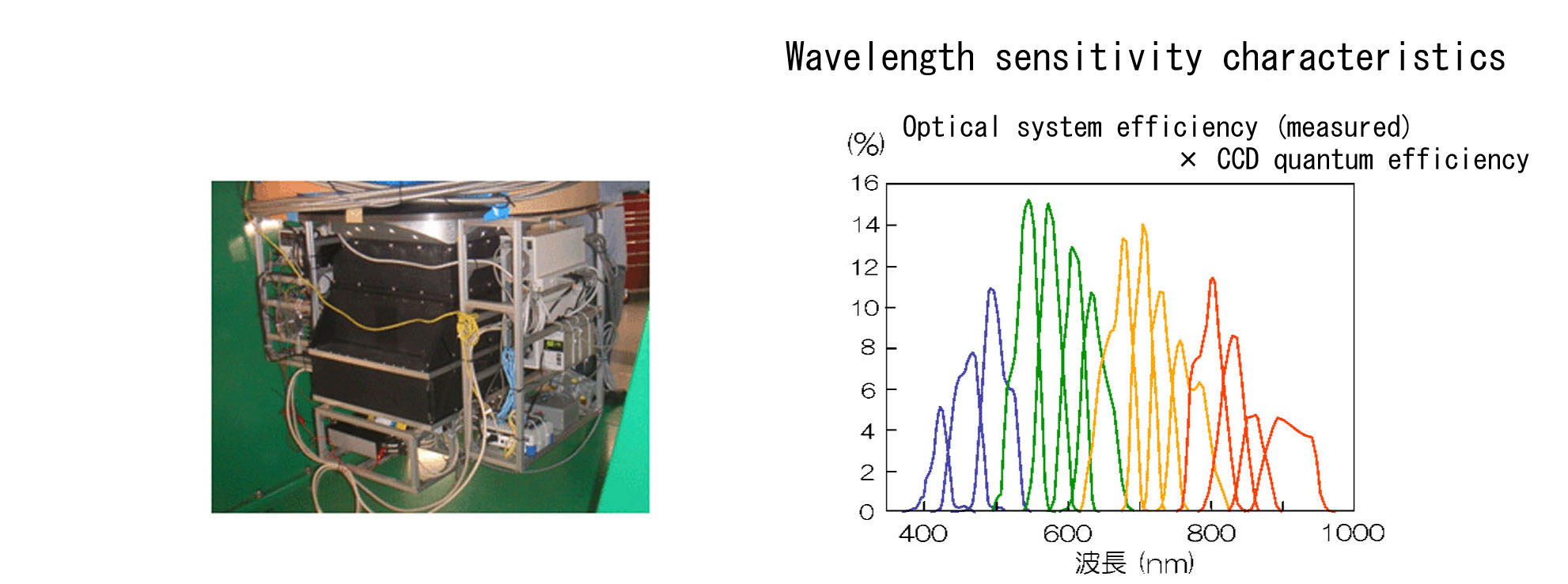Home > For Researchers > Public Research > Introduction of adoption public research ①
Introduction of adoption public research ①
Study of exoplanet atmospheres by visible-light high-precision spectroscopic imaging photometry
(Mamoru Doi / University of Tokyo)
One method of investigating the components of exoplanet atmospheres is to use the wavelength dependency of the primary star area which is occulted by the planet. Using the fact that the occulted area at each wavelength is effectively different when the atmospheric composition is different, we can precisely measure the wavelength dependency of the amount of extinction. This is ordinarily done using wide-band imaging or a multi-slit spectrograph. In this study, we use the Dichroic Mirror Camera (DMC) that was developed by our team and perform imaging that involves high-precision photometry in 15 bands simultaneously, in order to perform transit observations that are unlike any before.
As shown below, the DMC is a system that uses 14 dichroic mirrors to separate light into 15 bands within the range of 390 nm to 950 nm for imaging. Commissioning observations were performed in 2007 and 2008 using the 1.5-meter Kanata Telescope at the Hiroshima University, Higashi-Hiroshima Observatory, and the instrument successfully imaged a field of view approximately 4.5 arc minutes in diameter in 15 bands simultaneously (Doi et al. 2008, SPIE Proceedings). This method is most effective in observing astronomical objects where brightness or color varies over a short time, such as exoplanet transits, gamma ray bursts, asteroids, and active galactic nuclei. It is also very effective in obtaining the spectral energy distribution in the visible band for a variety of astronomical objects.
For this study, the DMC will be improved by replacing the 15 detectors and control electronics to have more sensitive detectors and high-speed electronics in order to facilitate observation of exoplanet transit observations. Although the detectors are relatively expensive, we are also using a different grant for scientific research that we received at the same time. We are also improving the system so that it can be mounted on the Nayuta 2-meter telescope at the Nishi-Harima Observatory – the largest telescope in Japan. We expect these improvements to improve sensitivity by 3 times and shorten the readout time to approximately 5 seconds (1/25 of the earlier time).

DMC system for simultaneous imaging of 15 optical bands DMC wavelength sensitivity characteristics
(before improvement)
In terms of the schedule, we are aiming to complete the improvements during the first half of 2015, and carry out the observations during the second half of 2015. The subjects for observations will be selected from candidates, including any newly-discovered candidates, by the middle of 2015 with due consideration for observations from prior research at that time. For example, with G1214 (M4.5 class star), which has an I-band brightness of 11mag, a S-N ratio of 500 can be achieved with 10 seconds of integration. In fact, it is expected that the final error will be determined by sensitivity correction and other system error, and we will use guiders to perform observation under conditions that are as constant as possible. We will also seek the cooperation of experienced researchers and observatory staff, and through a variety of observational efforts carry out the most precise observations possible.
In the original proposal, we planned to produce a special multi-slit unit for the Line Imaging and Slit Spectrograph (LISS), an instrument which is highly sensitive at long wavelengths and which was also developed by our team, in order to observe occultation by low-dispersion spectroscopy. However as a result of discussions with related persons after being selected for the grant, we learned that similar observations have already been carried out several times and that replacing the DMC detectors will require a large budget. We therefore assigned an order of priority and decided to prioritize observation with the improved DMC.
